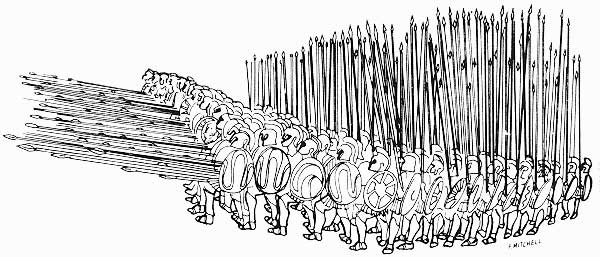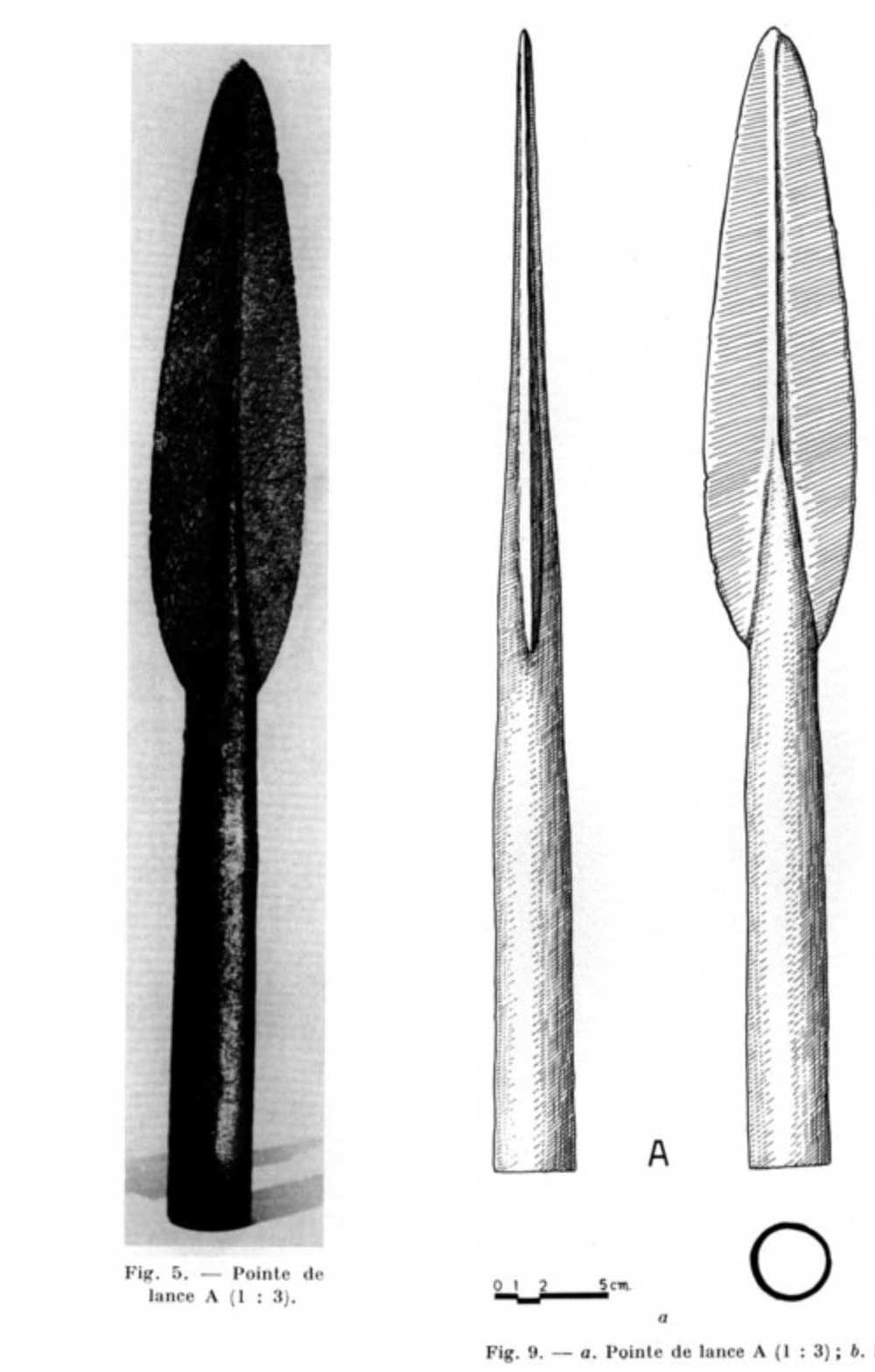Rabelais states that the leaves of Pantagruelion end in points like a Macedonian sarisse, and like a lancet used by surgeons.
Notes
Macedonian sarisse
Macedonian phalanx

Depiction of a Macedonian phalanx. From Elmer May et. al., Ancient and Medieval Warfare (1984).
sarisse macedonique
qui clipeo galeaque Macedoniaque sarisa
conspicuus faciemque obversus in agmen utrumque
Then forth rushed one, armed with the spoils of Emathian Halesus whom he had slain, Latreus, of enormous bulk of limb and body. His years were midway between youth and age, but his strength was youthful. Upon his temples his hair was turning grey. Conspicuous for his shield and helmet and Macedonian lance, and facing either host in turn, he clashed his arms and rode round in a circle, insolently pouring out many boasts on the empty air…
Sarisse Macedonique
[Note continues from Betony:] he [the Author, (Rabelais?)] goes on, and ending in the Points of the Macedonian Larix, not as the Translator has it, in the points of a Macedonian Spear. He took Larice (larch-tree) for Lance belike.
sarisse
C’est ainsi qu’on lit dans l’édition de 1552. Les deux éditions de Le Duchat, ainsi que celles de M. D. J. ont Larice, mais c’est une faute: ce mot ne vient pas du latin larix, larix, arbre, mais de sarissa, nom de la longue pique des Macédoniens, dans Ovide.
sarice macedonicque
Longue pique des Macédonians. Alias, larice.
Sarisse Macedonicque
Pique utilisée par les célèbres phalanges macédoniennes.
Macedonian
Macedonian [formed on Latin Macedonius = Greek Makedo´nioj]
A Pertaining to Macedonia, an ancient country north of Greece; now, a geographical area in the central Balkans.
1607 Edward Topsell The history of foure-footed beasts and serpents196 At one time is giuen them nine Macedonian Bushels, but… of drinke eyther wine or water thirty Macedonian pintes at a time.
Sarisse
The sarissa or sarisa (Greek: σάρισα) was a long spear or pike about 4–6 metres (13–20 ft) in length. It was introduced by Philip II of Macedon and was used in his Macedonian phalanxes as a replacement for the earlier dory, which was considerably shorter. These longer spears improved the traditional strength of the phalanx by extending the rows of overlapping weapons projecting towards the enemy, and the word remained in use throughout the Byzantine years to sometimes describe the long spears of their own infantry.
